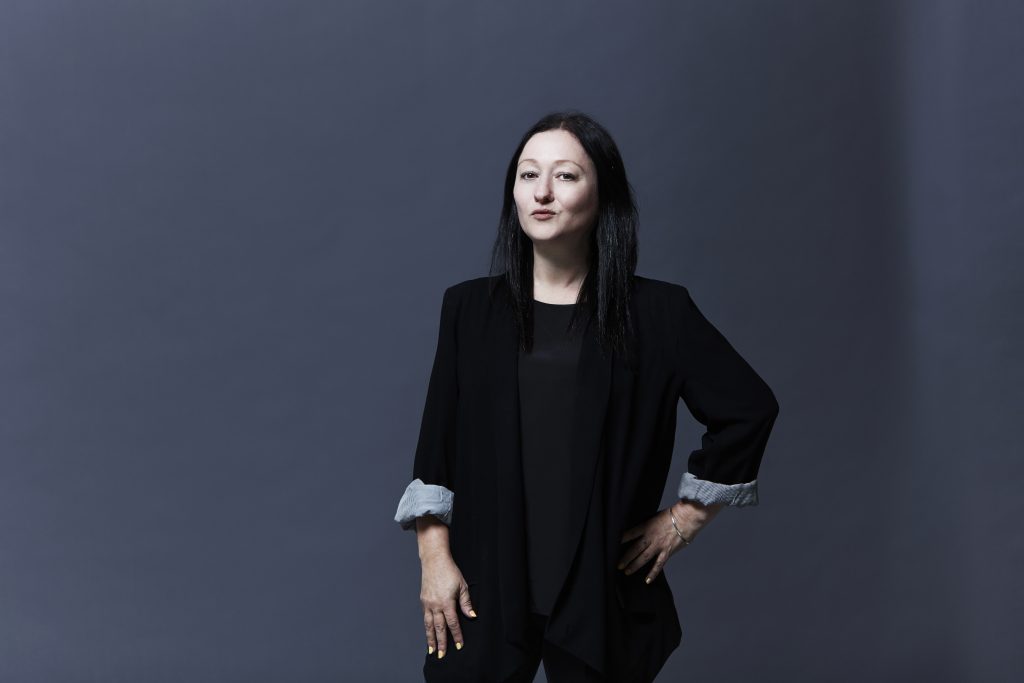Market
The View From: Alexie Glass-Kantor
The executive director of Artspace in Sydney, which re-opened in December after a major renovation, reflects on Australia’s evolving role in the global art discourse.

The executive director of Artspace in Sydney, which re-opened in December after a major renovation, reflects on Australia’s evolving role in the global art discourse.

Alexie Glass-Kantor

The View From is excerpted from The Asia Pivot, Artnet Pro’s biweekly members-only newsletter providing mission-critical analysis, insights, and exclusive intelligence on developments in Asia’s art markets, with a focus on business opportunities and challenges. Subscribe here to receive it directly to your inbox.
When Ava Gardner came to Australia in the 1950s to shoot On the Beach, an apocalyptic film in which Australia is the last safe haven on earth, she reportedly said that the country was the perfect place to make a movie about the end of the world. Indeed, Australia feels remote and still is sparsely populated—less than 27 million people live on a continent that is almost the same size as the United States without Alaska.
However, what people don’t understand is that if Australia were one city, we would be a remarkable cultural destination. The high number of museums, state collections, private foundations, commercial galleries, and the strength and robustness of cultural conversation are a testament to this. Australia’s cultural sphere is dynamic, layered, and nuanced, perhaps something that people don’t really understand until they visit.
Take Artspace, for example. It was our 40th birthday in 2023. The organization was established and nurtured by a visionary group of artists, curators, and philanthropists who wanted to support cultural diversity and, especially, recognized the importance of dialogue with and leadership from First Nations collaborators.
In some ways, Australia was far ahead of our American and European counterparts. Alternative spaces in the region had real momentum, enabling artists to create connections where institutional structures didn’t exist. They have scaffolded an ability for independent thinking and connection that I really admire, which doesn’t flinch from the complexity of where the market meets the not-for-profit.
Alternative spaces, however, are often undervalued because their focus is on supporting artists, not building collections. When I became the executive director of Artspace in 2014, we decided to move away from monographic exhibitions and publications to become a multi-platform programming institution that supports both the presentation and production of contemporary art. We’ve partnered with peer institutions globally over the past nine years to create international opportunities for Australian artists that can return to Australia, including our re-opening exhibition “Jonathan Jones: untitled (transcriptions of country),” developed with Aboriginal artist Jonathan Jones and co-commissioned with the Palais de Tokyo in Paris.
Artspace has 10 studios that are offered free to artists for one-year residencies, and we’ve secured a 35-year lease on our building at 30 percent of market value. It is tremendously exciting to think that there are people who haven’t yet been born who are going to benefit from residencies at Artspace.
Creating significant opportunities for artists and supporting them to build connections and new audiences is critical. The upcoming Art Basel Hong Kong is my seventh edition as the curator for its Encounters sector, which showcases large-scale installation works. Unlike other Art Basel sectors, such Unlimited or Parcour, Encounters sits within the fair, so the program cannot flinch from the business of the market, but at the same time must hold space and integrity for these artists’ works. Over the years I’ve been working with galleries to advocate for more gender equity and expanded diversity so that we can harness this opportunity to do something exceptional.
Again, this taps into the connectivity between different sectors that is particularly visible in this region. Biennials or triennials founded by artists or collectors like Ghost in Bangkok and the Dhaka Art Summit in Bangladesh, and even commercial events such as Art Week Tokyo, are new points of connection. Artist-run initiatives, independent and alternative spaces, private museums and foundations, the commercial sector, art fairs, and biennials don’t pull back from one another.
In terms of artistic practice, a lot of artists are working with different communities and artisans to create material works that are layered through research, translating stories, cultures and different ways of thinking. Artists such as Trevor Yeung and Jaffa Lam, both featured in Encounters 2023, and Haegue Yang are good examples. Some of what was seen in 2023 will be amplified for 2024, especially the use of research, translation, and collaborative practices to bring in the uncanny and unpredictable.
I love how artists today are operating on simultaneous levels to hold varied layers of meaning. We should welcome direct expression just as much as works that have the capacity and depth to allow audiences to read them differently. Amid the chaos and conflicts encroaching on our world, we should all be better poets.
–As told to Vivienne Chow. This article was originally published in The Asia Pivot on November 29, 2023.
Alexie Glass-Kantor is the executive director of Artspace in Sydney, Australia, and is the curator of the Encounters sector for Art Basel Hong Kong. She is also the chair of Contemporary Art Organisations Australia and has curated numerous major exhibitions and biennials, including the Australia pavilion at the Venice Biennale in 2022.